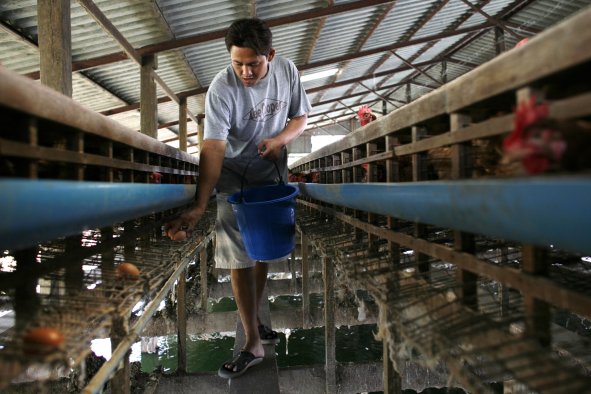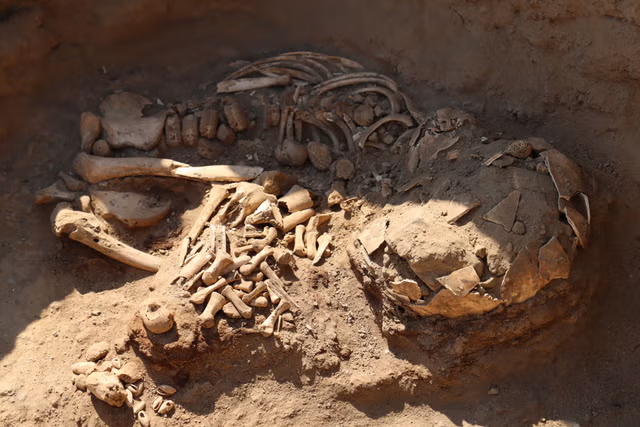Humpback whales might be a lot smarter than we first thought, scientists have found.
These marine giants may create and wield their own tools, according to a new paper in the journal Royal Society Open Science.
Humpbacks have been observed creating strange "bubble nets" to hunt their prey, manipulating this ephemeral tool to catch their dinner.
These whales have been known to create these "bubble nets" for a few years, but this new paper marks the first time that they have been observed manipulating them.
"Many animals use tools to help them find food, but very few actually create or modify these tools themselves," study co-author Lars Bejder, co-director of the Marine Mammal Research Program (MMRP) at UH Hawaiʻi Institute of Marine Biology (HIMB), said in a statement.
Tool use is considered a hallmark behavior of intelligence in animals. Once considered a uniquely human trait, research has shown that many animals, from birds to primates, and even some invertebrates, use tools in the wild.
Chimpanzees are perhaps the most well-known non-human tool users, having been seen to use sticks to extract termites from mounds, stones to crack nuts, and leaves as sponges to soak up water. Tool use in chimpanzees is often learned socially, highlighting their ability to learn and pass on culture. New Caledonian crows craft hooks from twigs to extract insects from crevices and can modify and shape tools for specific tasks, bottlenose dolphins in some regions have been seen using marine sponges to protect their beaks while foraging on the seafloor, and octopuses have been observed collecting and carrying coconut shells to later use as a shelter.
In the new paper, the researchers describe how the whales blow bubbles in special patterns, trapping krill in a vortex of air.
"We discovered that solitary humpback whales in southeast (SE) Alaska craft complex bubble nets to catch krill, which are tiny shrimp-like creatures. These whales skillfully blow bubbles in patterns that form nets with internal rings, actively controlling details like the number of rings, the size and depth of the net, and the spacing between bubbles," Bejder said.
"This method lets them capture up to seven times more prey in a single feeding dive without using extra energy. This impressive behavior places humpback whales among the rare group of animals that both make and use their own tools for hunting."
This is highly beneficial to the whales, as this population spends winter in Hawaii, and relies on the food eaten in Alaska during the summer and fall to survive the long, arduous journey back north.
The researchers made this discovery thanks to specialized tools that tracked the whales and followed them with drones.
"We deployed non-invasive suction-cup tags on whales and flew drones over solitary bubble-netting humpback whales in SE Alaska, collecting data on their underwater movements," co-author and MMRP researcher William Gough said in the statement. "Whales are a difficult group to study, requiring skill and precision to successfully tag and/or drone them."
"This little-studied foraging behavior is wholly unique to humpback whales," notes Gough. "It's so incredible to see these animals in their natural habitat, performing behaviors that only a few people ever get to see. And it's rewarding to be able to come back to the lab, dive into the data, and learn about what they're doing underwater once they disappear from view."
The researchers are thrilled at their discovery, and hope to learn even more about humpback behavior in the coming years.
"There is also data coming in from humpback whales performing other feeding behaviors, such as cooperative bubble-netting, surface feeding, and deep lunge feeding, allowing for further exploration of this population's energetic landscape and fitness," Bejder said.
"What I find exciting is that humpbacks have come up with complex tools allowing them to exploit prey aggregations that otherwise would be unavailable to them," Andy Szabo, executive director of the Alaska Whale Foundation (AWF), said in the statement. "It is this behavioral flexibility and ingenuity that I hope will serve these whales well as our oceans continue to change."
Do you have an animal or nature story to share with Newsweek? Do you have a question about animal intelligence? Let us know via science@newsweek.com.
References
Szabo, A., Bejder, L., Warick, H., van Aswegen, M., Friedlaender, A. S., Goldbogen, J., Kendall-Bar, J. M., Leunissen, E. M., Angot, M., & Gough, W. T. (2024). Solitary humpback whales manufacture bubble-nets as tools to increase prey intake. Royal Society Open Science, 11(8). https://doi.org/10.1098/rsos.240328
Disclaimer: The copyright of this article belongs to the original author. Reposting this article is solely for the purpose of information dissemination and does not constitute any investment advice. If there is any infringement, please contact us immediately. We will make corrections or deletions as necessary. Thank you.



